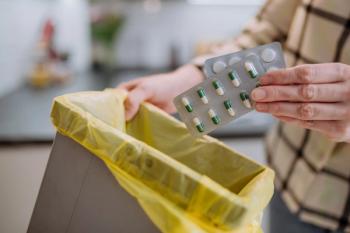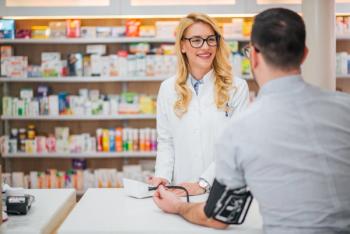
- Drug Topics/Liberty Software eBook September 2020
How to Make Your Start Up Pharmacy More Successful
What are patients in your area looking for? Which tech tools does your business plan need the most? How else can you improve your odds? This eBook reveals four keys to a successful pharmacy startup.
Sponsored by: Liberty Software
There are no guarantees when starting a pharmacy. Pharmacy start-ups have approximately a 40% chance of surviving 10 years.1 Four key steps can help tip the odds in your favor.
"Plan ahead financially, because you're probably going to have no to low income for 12 months," warned Enrique Reynoso, RPh, MBA, BCMTMS, owner of Beacon Wellness Pharmacy in Beacon, New York. "Look ahead to how you are going to do your marketing, because without marketing, you’re not going anywhere. Listen to your patients and your community and deliver what they want, not what you think they need. And use every technology tool you can get to make those first 3 things happen.”
Reynoso spent 20 years learning how to get new pharmacies moving while opening more than 60 stores for Walgreens. He opened his own pharmacy in Beacon, in New York’s Hudson Valley, in December 2019.
The basics of opening a pharmacy haven’t changed. Solid financial planning is as essential today as it was decades ago. So is marketing.
The vast majority of potential customers for any start-up pharmacy are already taking medications that they get from some other pharmacy. Every start-up pharmacy has to be expert in no-hassle prescription transfers. The basic marketing pitch is “we do it for you.”
"As pharmacists, prescription transfers are simple, but our patients don't know that," said Max Caldwell, RPh, owner of Caldwell Pharmacy in Wynne, Arkansas. Caldwell and 3 partners have opened 15 pharmacies in the northeast corner of the state in towns with populations as small as 800.
“A lot of people believe that if it says Walmart on the pill bottle, they have to go back to Walmart for a refill,” Caldwell explained. “It takes some education on our part. That’s one of the challenges of opening a new pharmacy “
It’s just as important to provide services and products that your patients want and need. What patients want most is convenience.
“Patients want fills and refills on their schedule, not ours,” said Lisa Wells, PharmD, pharmacy director for Apothecare Pharmacy, a group of 340B pharmacies co-located with Community Health Center (CHC) of Southeast Kansas, which operates 20 Federally Qualified Health Centers (FQHCs) in rural Kansas.
Many of the CHC clinics had no pharmacy within easy driving distance, which meant many patients saw a provider, got a script, and went home. The nearest pharmacy was too far away or they feared it would be too expensive. Simply opening a pharmacy steps from their prescriber eased a major pain point for patients.
Technology takes convenience beyond initial fills. Apothecare Pharmacy uses Liberty Software’s Pharmacy Management System, and after Apothecare rolled out a phone app, which is part of Liberty Software’s platform, refill rates surged.
“Patients may not have home internet connections in our part of rural Kansas, but almost everyone has a smart phone,” Wells said. “If they remember to refill at midnight, or while they’re out during the day, they just do it. And we get far fewer phone calls. The app helps our patients and it gives us more time use our knowledge of pharmacy to be a more active part of their total health care, not just a part of their prescription.”
Reality Check
Opening a new pharmacy is a gamble. According to the National Community Pharmacists Association, the number of independents has fallen by approximately 5% in recent years, from 23,029 stores in 2012 to 21,767 stores in 2018.2,3
Or maybe the picture isn’t quite so grim. The Pharmaceutical Care Management Association (PCMA) used data from the National Council of Prescription Drug Programs (NCPDP) to conclude that independent pharmacy numbers increased by 12.9% between 2010 and 2019. PCMA said chain outlet numbers declined by 4.0% over the same period.4
Either way, starting a business is risky. Bureau of Labor Statistics (BLS) data show that of new businesses started between 1994 and 2015, 54.3% survived 5 years and 35.7% survived 10 years.5 Health care start-ups, including pharmacies, fared somewhat better.
BLS found that 56.8% of health care start-ups born between 2004 and 2015 were still in business at 5 years and 42.6% at 10 years.1
Pharmacists are opening their own businesses anyway. In business operations as in medication management, success is about risk management, not risk avoidance.
All 3 of the start-up veterans Drug Topics® talked with agreed that the major risks in opening a pharmacy are inadequate financial planning and resources, inadequate or inappropriate marketing, and an inappropriate mix of services and products for the patient population. All 3 can be managed. And technology, from pharmacy operating systems to point-of-sale, perpetual inventory, medication synchronization, repackaging, robotics, analytics, and more, are an essential part of managing business risks as well as medication and health risks.
Start-Up Process
New pharmacies don’t suddenly open like flowers bursting from a tightly closed bud. Opening a new store is a process that begins long before the first patient walks in the door.
“There is a waiting time for everything, and you are starting from ground zero with a start-up,” Reynoso said. “You have to anticipate what those delays are going to be, how long they might take. And be sure that you have the capital it takes to get through that preopening period and the first year or 2 of operations.”
Don’t expect to turn a profit the first year. NCPA regularly surveys pharmacies during their first 5 years of operation. The latest results were reported in the 2020 NCPA Community Pharmacy Start-up Benchmarking Report. An important take-away: The typical start-up pharmacy breaks even in the third year of operation.6
That 3-year breakeven is based on building from 0 scripts the first day to 30,000 scripts annually in year 3. Dispensing represents over 90% of total revenue for the typical startup.6 The most effective ways to turn a profit sooner than 3 years are to build Rx volume more quickly or boost non-dispensing revenue. Or do both.
“I personally like to buy an existing pharmacy because you have money coming the very next day,” Caldwell said. “It takes less money to start a store from scratch, but it takes longer to find the profit. You can make it work either way, but you have to know what you are getting into, financially and in the community, and plan for it.”
Marketing
Caldwell’s business plan is opening pharmacies in small towns in economically depressed rural areas. It’s a market that most chains avoid and few independents consider. Some towns have a few hundred people, some have a few thousand.
The key factors are prescribers in the area, so the store has scripts to fill, and at least 20,000 people within a 10-mile radius to provide a reasonable Rx volume and delivery area.
Wells opens pharmacies in FQHCs. Scripts from providers in the center create an almost-automatic patient population for the co-located pharmacies. Proximity and familiarity helps create eager medical partners for clinical services such as INR monitoring, diabetes care, and more.
Reynoso serves a small town that has been growing steadily as multi-ethnic professionals and artists trade the crowded streets of New York City for the Hudson River Valley.
“My prescription volume has doubled every month, everything from diabetic to hypertension and some pain management,” he said. “When the coronavirus came, I saw a jump in immunizations with people coming in late for their flu vaccine.”
Traditional marketing channels, TV/radio broadcast, newspapers, direct mail, are the most expensive channels and the least effective for start-ups, Reynoso continued. Digital channels such as Google, Facebook, Instagram, and BeaconWellnessPharmacy.com, are both more effective and less expensive.
“Everybody is glued to their phones all day,” he said. “So I’m actively reaching out to people where they are. I have a place on every page to go if you have a question, wonder if maybe I can do something special. The town has a community webpage, so I write articles to get feedback and questions. It’s all about being part of the community and reminding people to come to me for their pharmacy needs.”
Service Mix Matters
Reynoso’s pharmacy is across the street from a busy chain outlet. Rather than focus on prescriptions, which chains can fill more cheaply than most independents, Reynoso is building a different kind of practice. Good marketing can get new customers in the door once, he noted, but it takes standout service to get them back again. And again and again.
“Rite Aid doesn’t do durable medical equipment, I do,” he said. “I’m building a compounding center, I offer delivery, I take the time to talk with my patients. If you’re just getting started with diabetes, you may not know you’ll need hand holding and training, but I know. We have gourmet lollipops and supplement lines that are sold only in pharmacies. I’m the only pharmacy in town that takes the time to personalize the business.”
Refills are bread and butter for pharmacies. Higher refill rates translate to increased revenues, faster inventory turnover, more compliant and healthier patients. Higher refill rates also boost Medicare star ratings and help minimize direct and indirect remuneration clawbacks. That’s where medication synchronization (med sync) can make a significant difference.
Caldwell puts med sync patients on a 28-day cycle so they run out of medication every fourth Friday. A technician calls each patient the week before they run out to be sure there are no changes. The pharmacy orders early the week meds are due and delivers on arrival from the wholesaler or calls the patient for pick up. Caldwell piloted med sync in 2013 and was the first pharmacy in the state to enroll more than 1000 med sync patients.
“We synchronize meds for the whole family—adults, kids, dogs, everybody in the household,” Caldwell said. “Our stores are on perpetual inventory, so med sync helps minimize inventory. We order the day after the billing cutoff for next week, which gives us 10 to 12 days to pay instead of 4 days. Technology makes it all happen.”
Similar to Apothecare, Caldwell’s pharmacy uses Liberty Software’s Pharmacy Management Platform technology to enhance its services.
Technology also powers unit-of-use packaging, which Caldwell tailors to the patient. When he realized a patient who takes meds both morning and night could not read, he split refill packages into 2 boxes. One box has a sun, for morning doses, the other a moon for evening doses.
“Take care of the patient, that’s what you do as a pharmacist,” Caldwell said. “And when you take that extra step, that’s when they tell their family and friends. Word gets around in a hurry and brings you more customers.”
References
1. US Bureau of Labor Statistics. US Bureau of Labor Statistics Business Employment Dynamics, Entrepreneurship and the US Economy, Chart 4. Survival rate by selected industries, 2004 birth cohort, 2004-2015, in percent. Last modified April 28, 2016. Accessed July 14 2020. https://www.bls.gov/bdm/ entrepreneurship/bdm_chart4.htm
2. NCPA. 2019 NCPA Digest. Changing the Pharmacy Payment Model. NCPA Digest. 2019. Accessed July 14, 2020. http://www.ncpa.co/pdf/di- gest/2019/2019-digest.pdf
3. Mom and Pop Pharmacies Dwindle Amid Competition. PYMNTS. Published May 12, 2020. Accessed July 14, 2020. https://www.pymnts.com/news/re- tail/2020/mom-and-pop-pharmacies-dwindle-amid-competition/.
4. PCMA. Independent Pharmacies in the US are More on the Rise than on the Decline. March 2020. Accessed July 14, 2020. https://www.pcmanet.org/ wp-content/uploads/2020/03/FINAL_Independent-Pharmacies-in-the-U.S.- are-More-on-the-Rise-than-on-the-Decline.pdf.
5. US Bureau of Labor Statistics. Business Employment Dynamics, Entrepre- neurship and the US Economy. Chart 2, Survival rates of establishments, by year started and number of years since starting, 1994-2015, in percent. Last modified April 28, 2016. Accessed July 14, 2020. https://www.bls.gov/bdm/ entrepreneurship/bdm_chart3.htm
6. NCPA. 2020 NCPA Community Pharmacy Start-up Benchmarking Report. 2020. Accessed July 14, 2020. http://www.ncpa.co/pdf/2020-ncpa-start- up-report.pdf
Newsletter
Pharmacy practice is always changing. Stay ahead of the curve with the Drug Topics newsletter and get the latest drug information, industry trends, and patient care tips.

















































































































